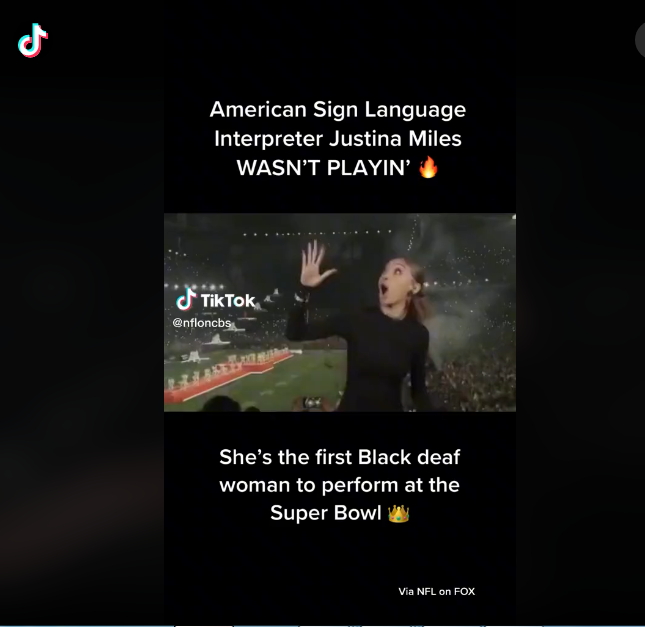Rihanna’s Super Bowl Sign Intepreter Put American Sign Language on the Map
Justina Miles: remember her name. While millions of people had been waiting years to see Rihanna perform live, a few hundreds of thousands of Americans with hearing impairments watched a rising star interpreting Rihanna’s lyrics in real time with impressive show-womanship.
This article is in partnership with Day Translations.
ASL Intepreter Justina Miles Made History
Justina Miles made an introductory video about herself for the YouTube channel ‘deaf not Deaf’ in which she talks about her background, being from Philadelphia and being a former John Hancock student, enjoying dancing and translating music into American Sign Language. In the video she also says she plans to become a nurse “to give black people, deaf people and black deaf people better accessibility to their health”.
Not only did Justina steal the show according to social media, where short videos of her signing along to Rihanna’s hits at the Super Bowl Half Time Show went viral, especially on TikTok; she is the first deaf black woman to provide American Sign Language at the NFL games.

The official NFL account on TikTok posted the following caption to accompany one of Justina’s sign language interpreting videos:
“American Sign Language Intepreter Justina Miles WASN’T PLAYIN’ [fire emoji]. She’s the first Black deaf woman to perform at the Super Bowl [crown emoji]. Making Black history with Rihanna… during Black History Month, nbd [closed fist emoji].”
Justina Miles Put in the Work (Work Work Work Work)
As she translated the lyrics to Rihanna’s ‘Work’ on the live broadcast, Justina Miles crossed her forearms one on top of the other with closed fists. According to American Sign Language, the sign for the word ‘work’ is to cross one wrist over the other with closed fists. Hard work is signed by drawing circles in the air with one closed fist over the the other closed fist.
Now look at this instructional video from the American Sign Language Teaching Resources YouTube channel, teaching how to sign the word for ‘slavery’:
The hands are closed into a fist, crossed at the wrists, one on top of the other. The sign also includes a slight movement of the crossed wrists together.
Black American Sign Language is a branch of sign language developed for Black Deaf people in response to a need to support Black people with disabilities who were marginalised because of slavery and segregation. The first school for Deaf people was established in 1817, but education for Black Deaf children wasn’t available until much later, in the 1850s, with home signs being the main form of communication before that time for Black Deaf people and their families as well as any other close connections.
Over time Black American Sign Language became more integrated with standard American Sign Language through years of educational programmes but many young Black people want to retain elements of BASL as part of their heritage.
